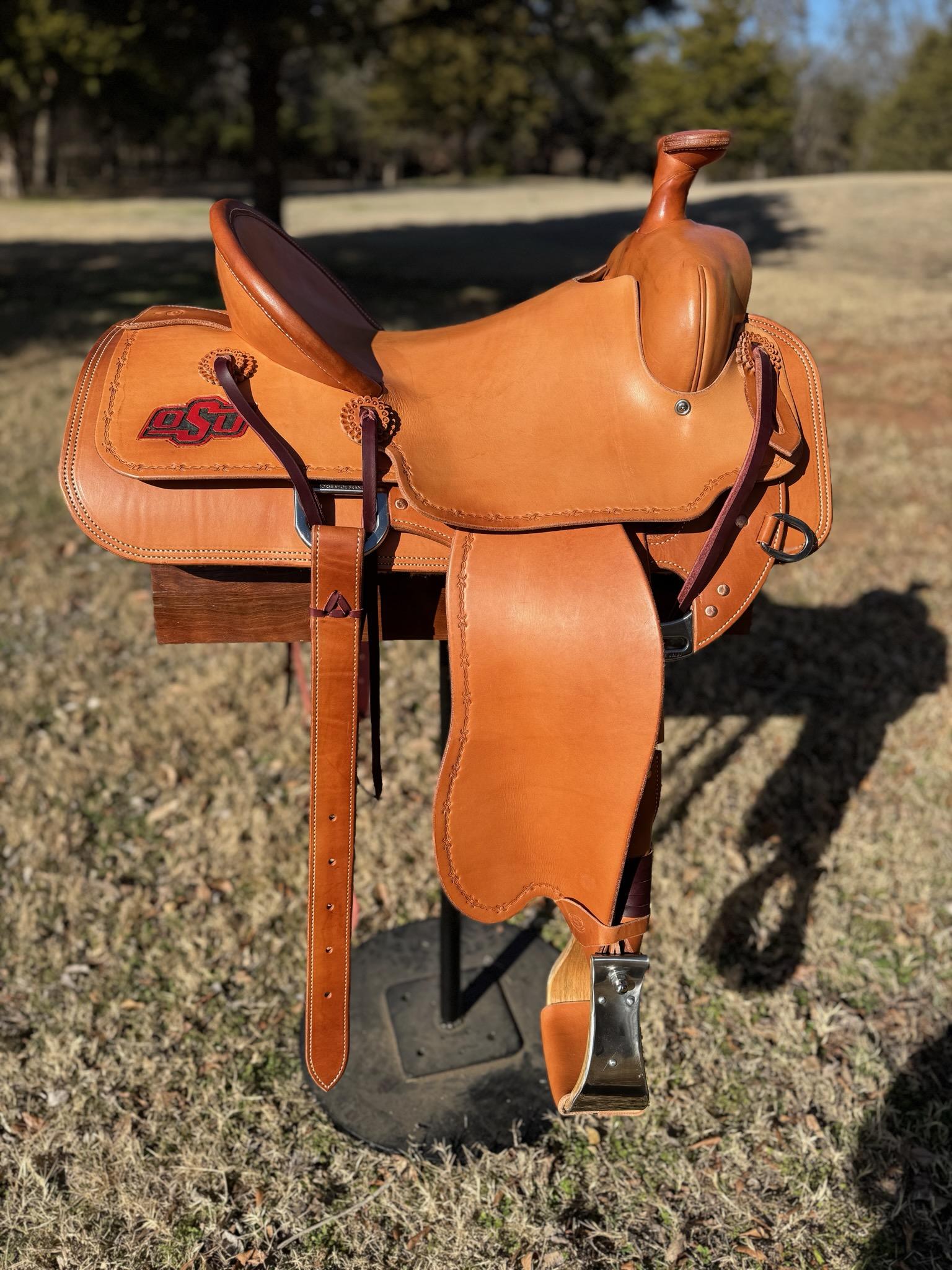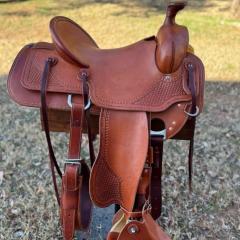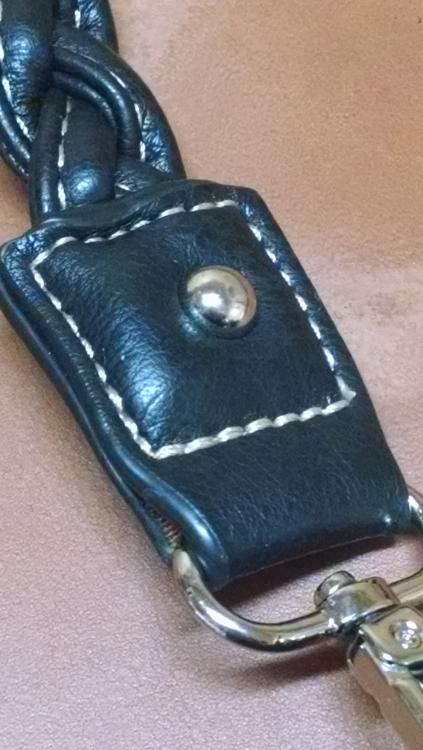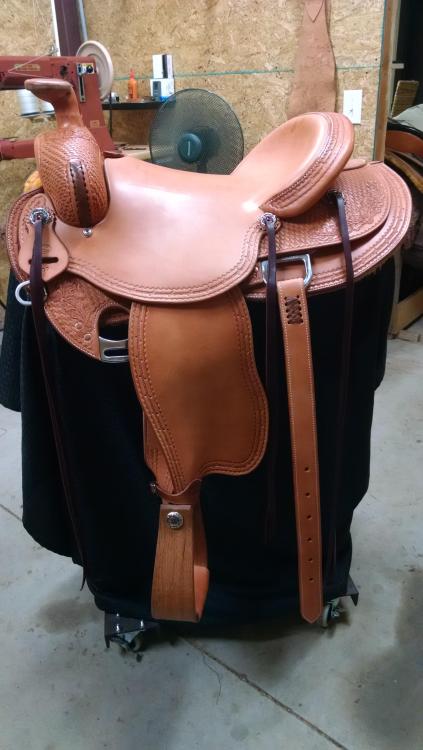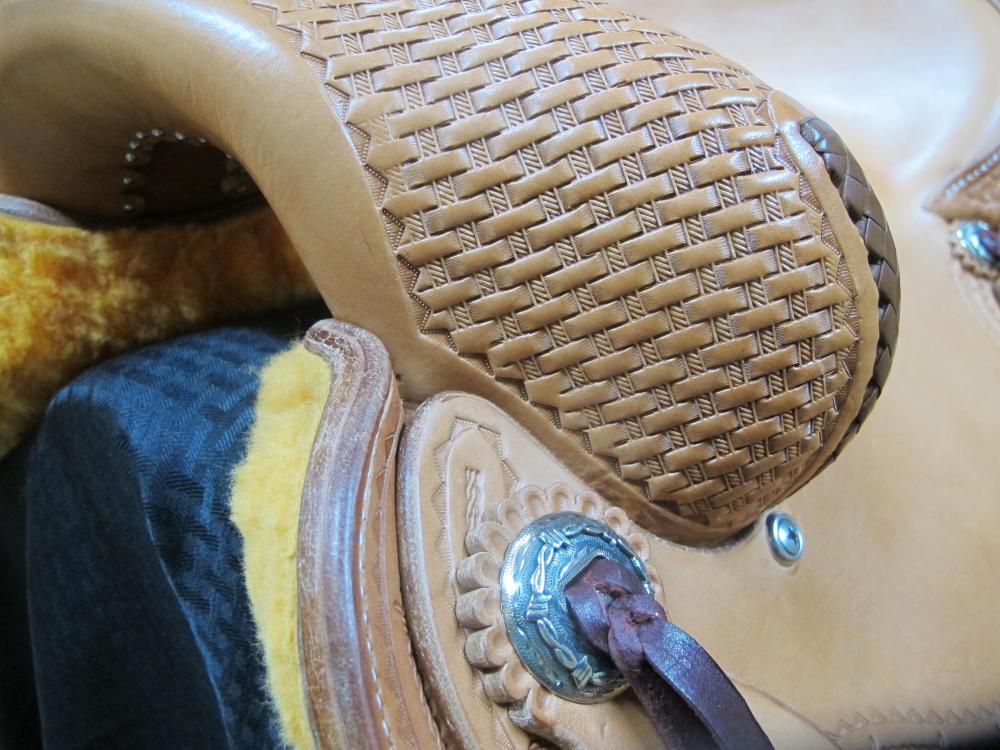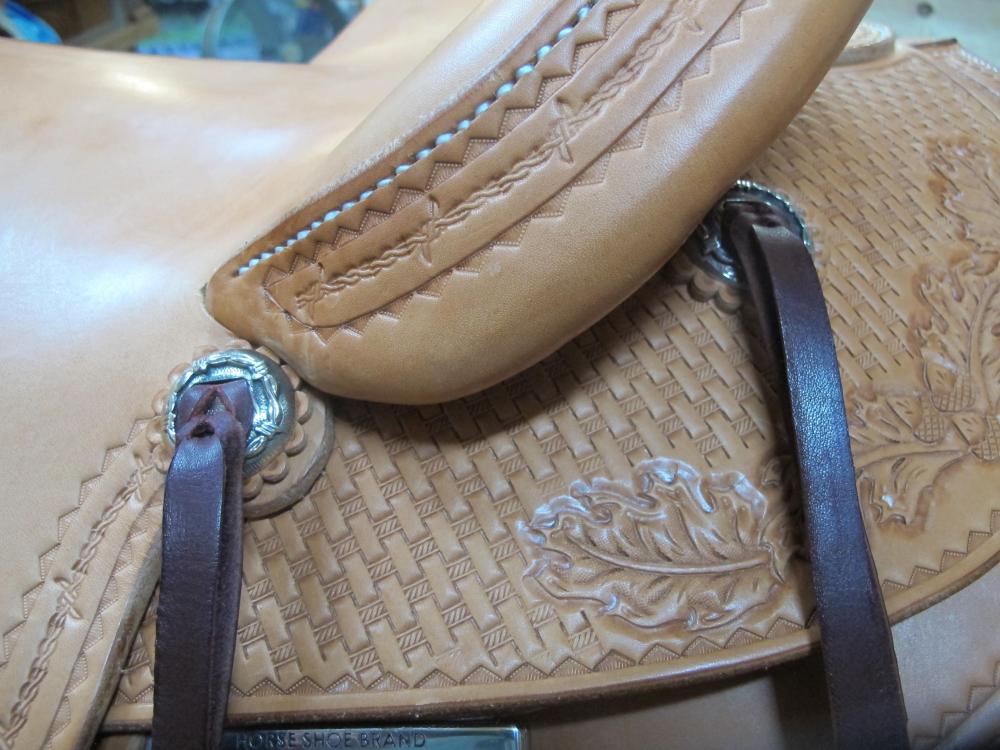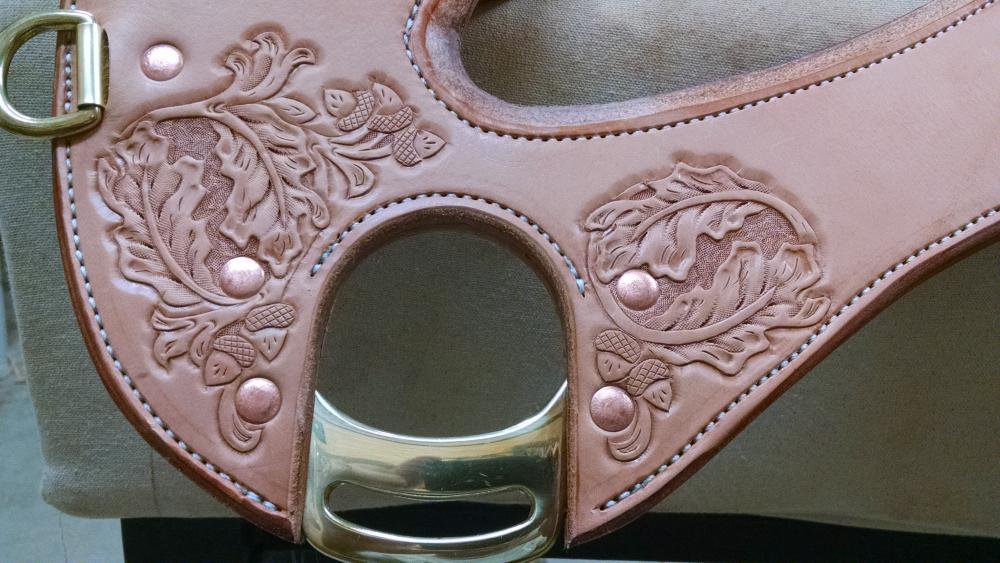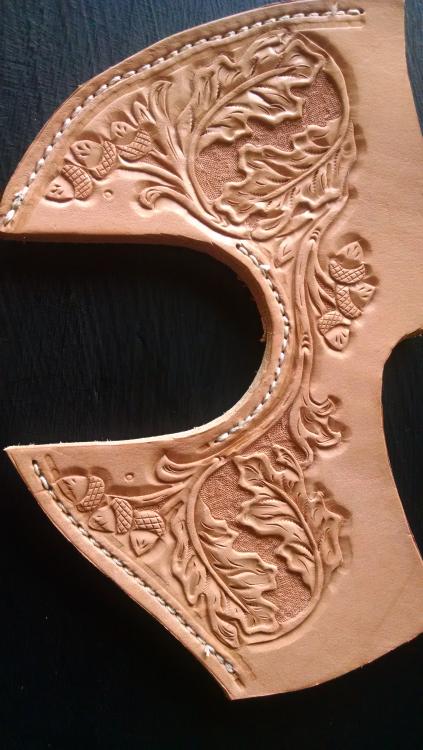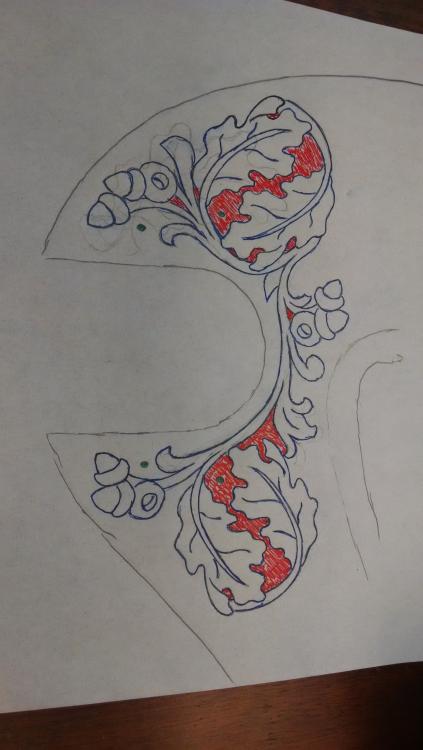-
Posts
486 -
Joined
-
Last visited
Content Type
Profiles
Forums
Events
Blogs
Gallery
Everything posted by rktaylor
-
Billy, Thanks for sharing your process, though I have no desire to duplicate it. Just out of curiosity, did you square your riggings, then fit the swell cover? I have a hard enough time getting my steps in order, let alone combining a couple of them. Randy
-
The ones on this purse are double capped. I haven't made it to Tandy to look at replacements. Randy
-
The domed rivets from Tandy look just like this. I haven't measured these, but I will tomorrow.
-
Thanks for the suggestions and advice. It has helped me with my search. Randy
-
I have searched the internet for rivets like this to no avail. Maybe my search terms are incorrect. Does anyone know where I can purchase these? I haven't worked on purses, but have been asked to shorten this strap. That means removing this rivet. Any advice is appreciated. Randy
-
I was hoping you would get comments from more seasoned saddle makers. I always find their comments on others' work extremely valuable when I critique my work. The tooling looks really uniform and I like the tooling on the seat. The tooling on the billets also adds a nice touch to the saddle. I'm not familiar with this style of saddle and am not as experienced as others, so take my critique with a grain of salt. The seat jockey shape and placement seems a little off. Everything is square and it's round. It also seems a little too far back. The front and rear jockeys are not lined up. I think they would be more appealing if the bottom line was consistent. It may be the way it's sitting on the stand but the skirt looks like it runs down toward the front. It may be level when you put it on a horse. Thanks for sharing your work, Randy
-
Nice looking saddle. It looks really balanced. Thanks for sharing. Randy
-
Ryan, Thanks for the comments. It doesn't cost to enter this contest. The winner in each division receives a belt buckle. I'm not sure about other contests. Randy
-
Clyde, I also thought the quality of saddles was great. I received a lot of good comments and suggestions on my saddle. It was really motivating. Thinking about next year already. Randy
-
Thanks for the compliments. The conchos are not burnished. I try to cut the as clean as possible. Ron, I always appreciate your critique of my work. I've picked up a lot of tips from you. I'll see if I can find a binding edger at the show. The wife would be disappointed if I didn't buy anything. BTW there's some really nice saddles here. Randy
-
Here's my latest effort. I'm entering this in the Wichita Falls Saddle Contest. Look me up if you are going to the show. Comments and critique are always welcome, Randy
-
Thanks. Randy
-
Thanks for the comments and encouragement. I'll post pictures in the gallery when it's complete. Oltoot, Can you share a picture of your breast collar dee? I know you don't like domed rivets, but I feel like trading some durability for appearance is acceptable. Maybe if I was fixing them, I would change my mind. Randy
-
Here's the final product. Not the saddle, just this piece. Still room for improvement, but not too bad. I tried to get the rivets in gaps. Randy
-
Ryan, Thanks for the comments. I get most of my leather from Panhandle in Amarillo, but am looking into ordering direct from Hermann Oak. Randy
-
Bob, Thanks for commenting. I've read your burnishing tip in other posts and think about it all the time when I'm working. I just need to follow it a little more. I've thought about dying the edges, but haven't attempted it on a saddle yet. I need to do it on some smaller projects first. Randy
-
This looks nice. I suggest carving the practice piece as I think that improves my drawing. I feel that some items are easier to draw than to carve. But then, maybe I need practice on both ends. I hope to see the carved product. Randy
-
Well done. Randy
-
Ryan, Good catch. I did miss that area. The bevel marks are exaggerated because the leather was too wet. Normally I would go back over them, but I was in a hurry. In the past I have drawn really nice patterns that I felt were difficult to tool. By just practicing on this and the comments here, I found a few things that needed changing. The presser foot marks are primarily due to wet leather, but I have since reduced the pressure. I'm about as low as I can go now. I'll post pictures of the finished piece here and the saddle in the saddle gallery section. Thanks for the comments. Randy
-
Ron, Thanks for the tips. I modified the pattern some, but here's my practice piece. As noted by cowboycolonel I need more space along the edges. It was tooled and sewn too wet so it's not great. I'll draw a new version this week and maybe get it tooled next week. Thanks again. Randy
-
Thanks for the comments. I'm too close to the stitch love on the bottom, but have plenty of room on the top. The jockeys will cover a lot of this, but I didn't like the empty space above the cutout. I don't know why. I copied the empty acorn from another pattern, but haven't really warmed up to it. I'll probably replace it with a full acorn. Thanks again for the comments and suggestions. I'll post the final product when it's tooled. Randy
-
I'm looking for feedback on this oak leaf design. It's for the rigging plate on a saddle. Red is the background and the green points will be copper rivets. All critiques and comments are welcome. Thanks, Randy
-
Looks great. I really like that style and have made a couple like that. For what its worth, I end the liner piece just short of the buckle slot. It creates a nice pocket for the buckle. Sorry, I don't have any pictures to share. Randy
-
Thanks Josh, I'll, have to try the cordura. I built a burnished out of a bench grinder, but I haven't used it on saddle parts. It makes burnishing bridles and breast collars easier. Randy
-
Ron, Thanks for the compliments. I bought a 3/4 hp bench grinder and my dad made a burnishing wheel. We still need to do a little fine tuning, but so far it is working alright. I am hoping this helps with some of the edges, but the horn will still be by hand. I have two new trees and leather should show up this week. I working hard to turn a hobby into a job. Randy


